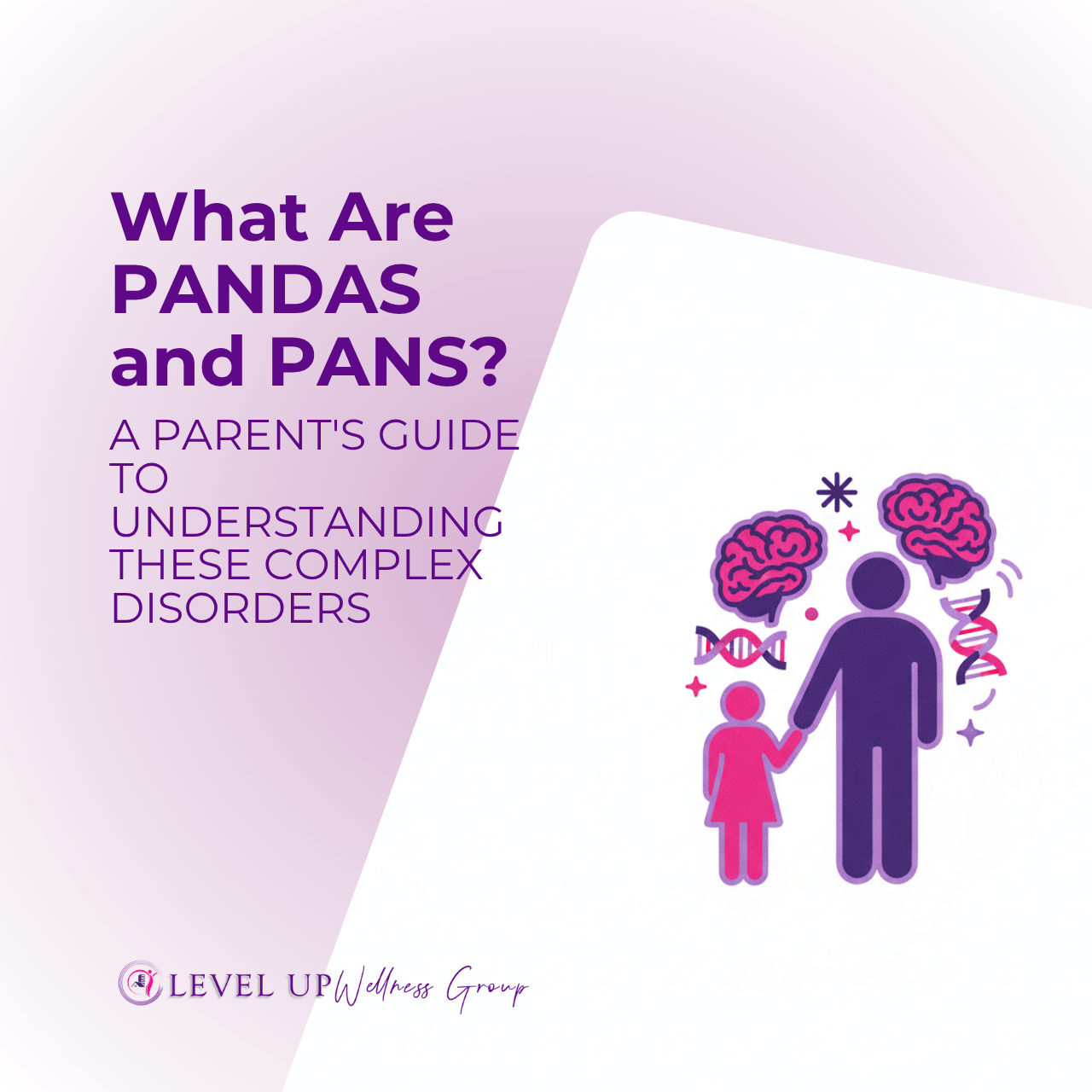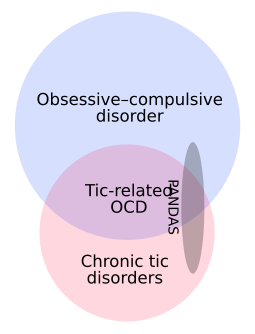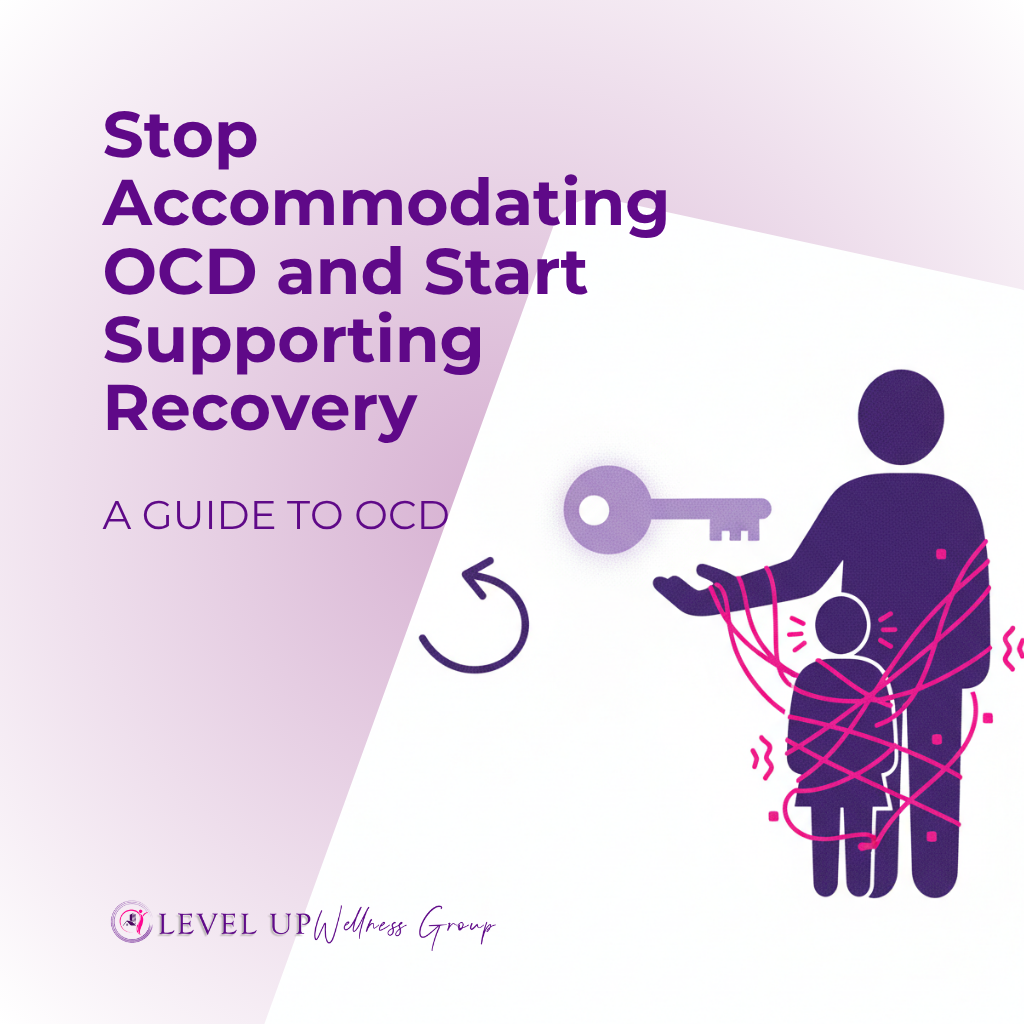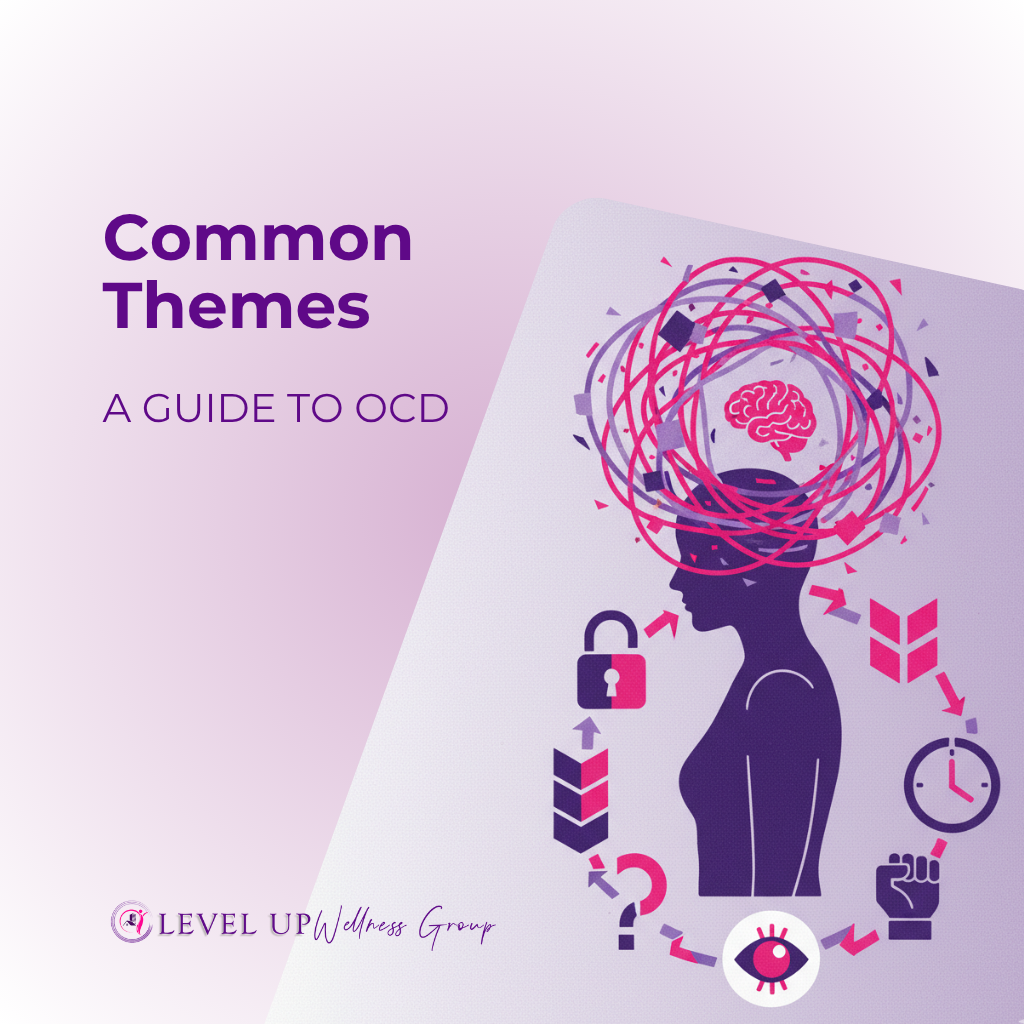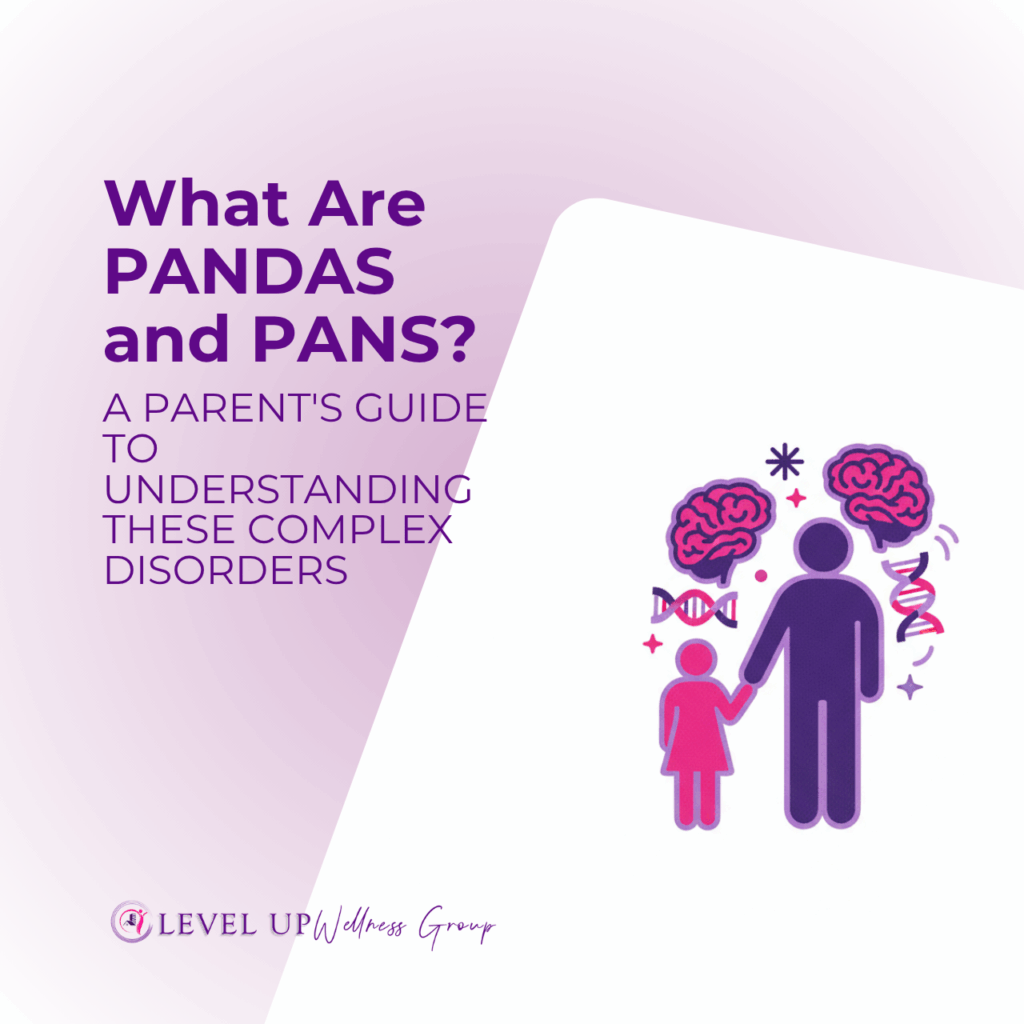
Introduction
As a parent, discovering that your child might be experiencing a complex neuropsychiatric disorder can be overwhelming and frightening. PANDAS (Pediatric Autoimmune Neuropsychiatric Disorder Associated with Streptococcal Infections) and PANS (Pediatric Acute-onset Neuropsychiatric Syndrome) are two challenging conditions that can dramatically and suddenly change a child’s behavior, cognitive function, and overall well-being.
Seeking A Specialist? Schedule Your Free Consultation Today
This comprehensive guide is designed for parents, caregivers, and educators who want to understand these intricate disorders. We’ll explore their definitions, symptoms, causes, diagnostic processes, treatment options, and provide hope and guidance for those navigating this complex medical landscape.
Early awareness and detection are crucial. By understanding PANDAS and PANS, you can become an informed advocate for your child, helping them receive the specialized care they need to manage and potentially recover from these challenging conditions.
What are PANDAS and PANS?
Definition of PANDAS
PANDAS is a specific type of pediatric disorder characterized by a sudden and dramatic onset of neuropsychiatric symptoms following a Group A Streptococcal (GAS) infection. Unlike typical infections, in PANDAS, the body’s immune response mistakenly attacks the brain’s basal ganglia, leading to a range of neurological and psychiatric symptoms.
The key distinguishing feature of PANDAS is its direct link to streptococcal infections. When a child contracts strep throat or scarlet fever, their immune system produces antibodies to fight the infection. In PANDAS, these antibodies unexpectedly target the brain, causing inflammation and neurological disruptions.
Definition of PANS
PANS (Pediatric Acute-onset Neuropsychiatric Syndrome) is a broader diagnostic category with a similar presentation but a more diverse range of potential triggers. While PANDAS specifically links to strep infections, PANS can be initiated by various infectious agents, environmental factors, or metabolic disturbances.
Potential PANS triggers include:
- Influenza
- Mycoplasma pneumonia
- Lyme disease
- Epstein-Barr virus
- Environmental toxins
- Metabolic disorders
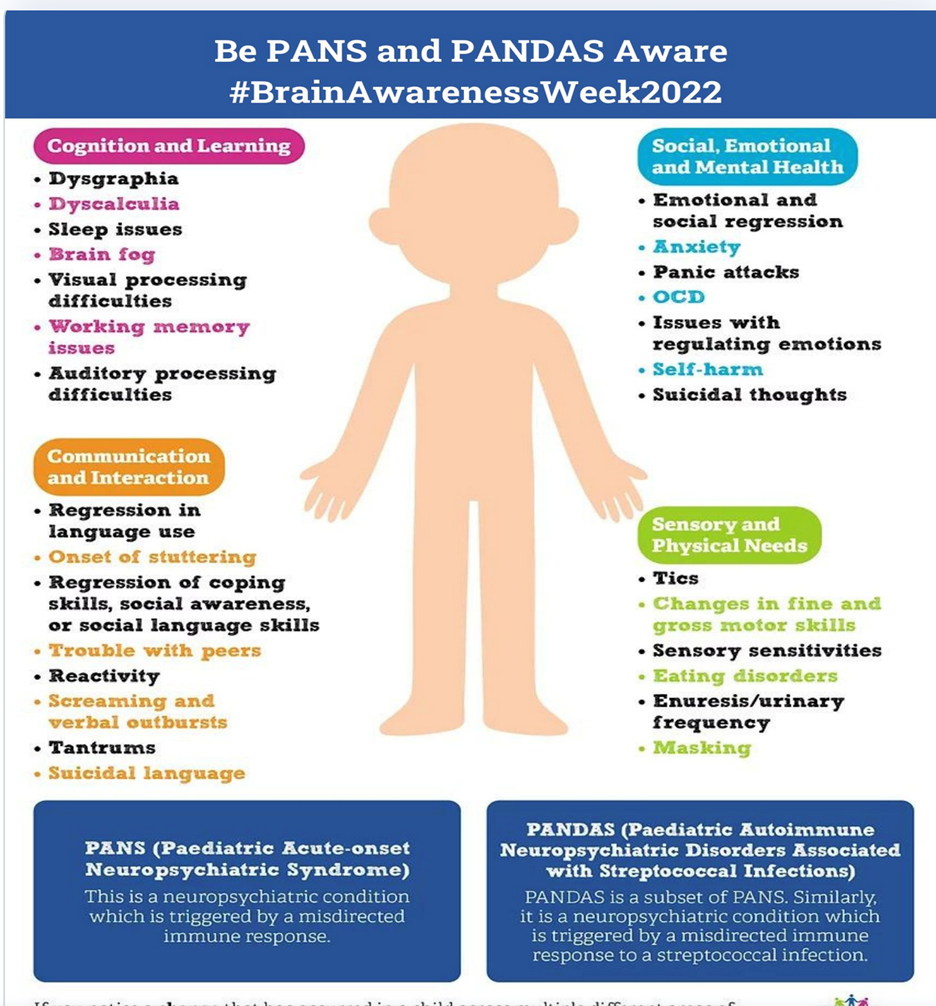
Key Difference Between PANDAS and PANS
The primary distinction lies in the triggering mechanism:
- PANDAS: Strictly linked to Group A Streptococcal infections
- PANS: Can be triggered by a broader range of infections and environmental factors
Both disorders share similar sudden-onset neuropsychiatric symptoms and an autoimmune response that affects brain function.
Symptoms of PANDAS and PANS
Core Symptoms
- Abrupt onset of severe Obsessive-Compulsive Disorder (OCD)
- Dramatic eating restrictions or changes in eating habits
- Significant emotional and behavioral changes
- Neurological disruptions

Comprehensive Symptom List
The symptoms of PANDAS and PANS are complex and can vary widely between individuals:
- Psychological Symptoms
- Intense anxiety
- Depression
- Rapid mood swings
- Emotional lability
- Motor and Neurological Symptoms
- Sudden onset of tics
- Motor abnormalities
- Fine and gross motor skill disruptions
- Sensory Processing
- Hypersensitivity to light
- Sound sensitivities
- Touch aversions
- Tactile defensiveness
- Cognitive and Academic Challenges
- Significant decline in school performance
- Memory problems
- Concentration difficulties
- Handwriting regression
- Decreased academic abilities
- Behavioral Regression
- Developmental setbacks
- Age-inappropriate behaviors
- Separation anxiety
- Emotional immaturity
- Physical Symptoms
- Increased urinary frequency
- Bedwetting
- Sleep disturbances
- Potential somatic complaints
Unique Features of PANDAS
PANDAS is characterized by an episodic course with distinct periods of symptom exacerbation and remission. These “flare-ups” often correlate with new streptococcal or viral infections, creating a cyclical pattern of symptoms.
Causes and Triggers
What Causes PANDAS?
PANDAS occurs when a Group A Streptococcal infection triggers an abnormal autoimmune response. Instead of solely fighting the bacterial infection, the immune system mistakenly attacks healthy brain tissue, specifically the basal ganglia.
Common strep infections that might trigger PANDAS include:
- Strep throat
- Scarlet fever
- Impetigo
What Causes PANS?
PANS has a more complex and varied etiology. Unlike PANDAS’ specific strep connection, PANS can be initiated by multiple infectious, environmental, and potentially genetic factors.
Potential PANS triggers include:
- Viral infections
- Bacterial infections
- Lyme disease
- Environmental toxins
- Metabolic disorders
- Genetic predispositions
How the Immune System Impacts the Brain
In both PANDAS and PANS, the immune system’s misguided response causes neuroinflammation. Autoantibodies attack the basal ganglia, a brain region responsible for motor control, executive functioning, and emotional regulation.
This autoimmune attack can disrupt neurotransmitter function, leading to the sudden and dramatic neuropsychiatric symptoms observed in affected children.

Role of Genetic Predisposition
Research suggests a potential genetic component in PANDAS and PANS susceptibility. Some children might have a genetic predisposition that makes them more vulnerable to these autoimmune responses.
Schedule Your Child's PANDAS/PANS Assessment
Schedule an assessment with our experienced PANDAS/PANS specialists to get answers and develop a personalized treatment plan.
Diagnosis of PANDAS and PANS
Clinical Criteria for PANS
To diagnose PANS, healthcare professionals look for:
- Sudden onset of OCD or severe eating restrictions
- At least two additional neuropsychiatric symptoms
- Symptoms not better explained by another neurological or medical condition
Clinical Criteria for PANDAS
PANDAS diagnosis requires:
- Documented Group A Streptococcal infection
- Sudden onset of OCD or tic disorders
- Neurological symptoms
- Temporal relationship between infection and symptom emergence
Diagnostic Process
Diagnosing PANDAS and PANS involves a comprehensive approach:
- Detailed medical history review
- Comprehensive physical examination
- Laboratory tests
- Throat cultures
- Strep antibody titers (ASO and Anti-DNase B)
- Inflammatory markers
- Psychological and neurological assessments
- Exclusion of alternative medical conditions
Please note that positive strep tests are only found in 50% of cases and many children do not present with classic strep throat markers: sore throat, fever and stomach aches. Rapid strep tests miss 15-20% of active strep cases and blood titers such as ASO, Anti-DNase B test have false negatives of up to 40 percent.
Strep can also be found in the gut and in the perianal (anus) area, which is often not tested.“There is still no valid diagnostic instrument or biomarkers to confirm or disprove the diagnosis, and PANDAS/PANS is still a condition of exclusion where the symptomatology is not better explained by other diseases.” (Bleibacher al. 2024). Diagnosis is largely based on clinical symptoms.
Treatment Options
Medical Interventions
- Antibiotics
- Treat underlying strep infections
- Potentially reduce symptom severity
- Prophylactic treatments in recurrent cases
- Anti-inflammatory Therapies
- Ibuprofen
- Corticosteroids
- Targeting neuroinflammation
- Immune-Modulating Treatments
- Intravenous Immunoglobulin (IVIG)
- Plasma exchange
- Targeted immune system interventions
Therapeutic Interventions

- Cognitive-Behavioral Therapy (CBT)
- Managing OCD symptoms
- Developing coping strategies
- Addressing anxiety and emotional challenges
- Family-Based Therapy
- Supporting the entire family system
- Teaching stress management
- Providing emotional support
- Dietetics
- Many individuals with PANDA/PANS have food aversion. In terms of the healing process, it is paramount to work with a trained dietitian who understands nutrition, food aversion, and healing of the body.
Lifestyle and Supportive Measures

- Sensory integration techniques
- Academic accommodations
- Nutrition and lifestyle modifications
- Stress reduction strategies
Prognosis and Recovery
Early diagnosis and intervention are critical. With proper treatment, many children experience significant improvement or complete remission of symptoms. However, delayed or missed diagnoses can lead to prolonged challenges.
Recovery rates vary, but comprehensive, multidisciplinary approaches offer the best outcomes.
FAQs About PANDAS and PANS
Is PANDAS contagious?
No, PANDAS itself is not contagious. The initial strep infection can be, but the autoimmune response is not transmitted.
How can parents differentiate between PANDAS and typical OCD?
PANDAS/PANS features a sudden, dramatic onset of symptoms, often following an infection, which distinguishes it from traditional OCD.
What to do if I suspect my child has PANDAS/PANS?
Consult a pediatrician or specialist familiar with these conditions. Seek comprehensive evaluations and specialized care.
Can adults have PANDAS or PANS?
While primarily pediatric, some research suggests similar mechanisms in adults, though diagnostic criteria are less established.
Resources for Parents and Caregivers
Professional Organizations
- PANDAS Physicians Network
- PANDAS Network
- National Institute of Mental Health
Support Groups and Forums
- Online communities
- Local support groups
- Family counseling resources
Recommended Readings
- Academic research papers
- Parental guidebooks
- Specialized medical journals
Conclusion
Understanding PANDAS and PANS is the first step in supporting your child’s health and well-being. These complex disorders require patience, compassion, and a comprehensive approach to treatment.


